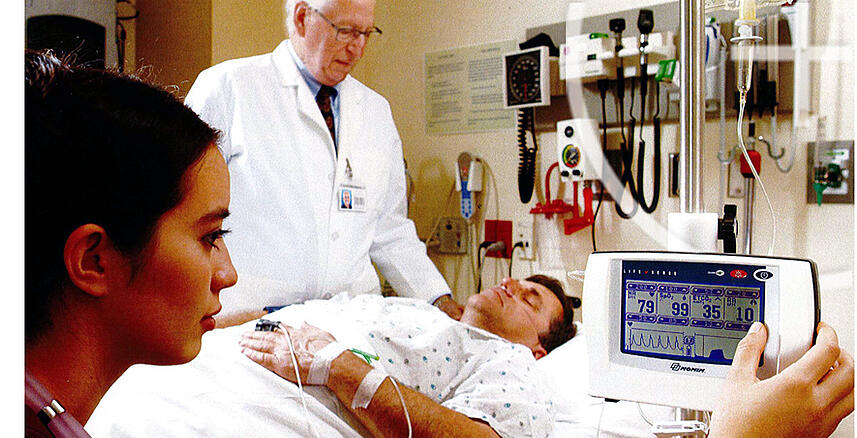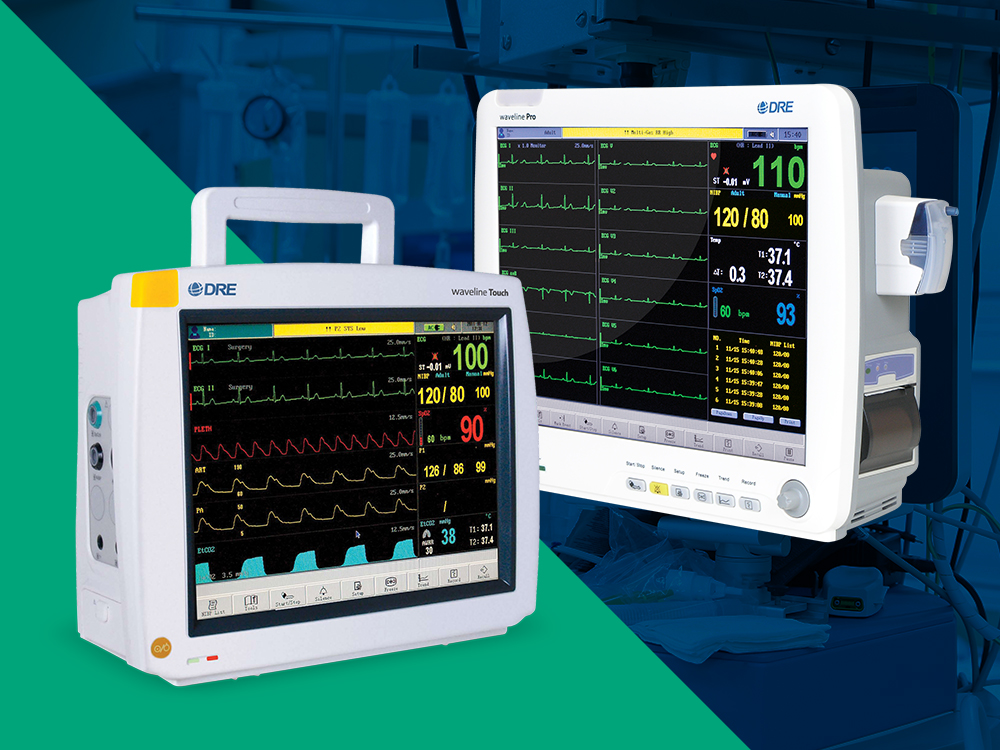end-tidal co2 monitoring standard of care
Defined as the monitoring of exhaled carbon dioxide through the respiratory cycle Measuring of End tidal CO2 is considered a standard of care for confirming endotracheal tube placement An important adjunct for assessing a critical patient The Journey of A Molecule Through the Respiratory Cycle. The Respiratory Care Department will initiate and maintain non-invasive monitoring of end-tidal CO2 as ordered by the physician in the intensive care ED and step-down units.

Shanghai Jaqi Medical Equipments Medical Hospital Furniture Medical Equipment
2 4 The term capnometry refers to the.

. 11 End Tidal CO2 monitoring ETCO2 via waveform capnography should be used to confirming correct placement of the endotracheal tube andor measure the adequacy of ventilation 12 For patients in cardiac arrest end tidal CO2 is a useful adjunct to treatment 121 Note. Bhat Y et al. Also called capnometry or capnography this noninvasive technique provides a breath-by-breath analysis and a continuous recording of ventilatory status.
Monitoring in the postanesthesia care unit. Changes in the shape of the capnogram are diagnostic of disease conditions while changes in end-tidal CO 2 EtCO 2 the maximum CO 2 concentration at the end of each tidal breath can be used to assess disease severity and response to treatment. It is the standard of care during certain procedures such as intubations and sedations and can be used in variety of clinical situations.
1 Most anesthesia care providers use an anesthetic agent monitor to measure agent concentrations in their everyday practice and in much of the world it has become a de facto Standard of Care. The 2010 House of Delegates of the American Society of Anesthesiologists ASA amended its Standards for Basic Anesthetic Monitoring to include mandatory exhaled end-tidal carbon dioxide E t CO 2 monitoring during both moderate and deep sedation to its existing requirement for endotracheal and laryngeal mask airway general anesthesia. In fact its commonly called the ventilation vital sign.
2012 Vol 47 4. Importance of End-Tidal Agent Monitoring as a Standard of Care. An increase in etCO2 by 5 appears to have reasonable sensitivity 71-91 and specificity 94-100 for fluid responsiveness in two studies of patients breathing passively on the ventilator.
End-tidal CO2 monitoring allows for almost immediate information about what is going on with a patient. November 11 2012. Continuous assessment of correct endotra-.
End-tidal CO2 monitors can give healthcare providers an early warning if a patient is experiencing respiratory distress or going into respiratory failure. Nurses completed 2 assessments of confidence in readiness for discharge before and after etCO 2. Further the Committee acknowledged the fact that the end-tidal CO 2 numerical value displayed on a monitor during mask anesthesia often may be influenced by gas mixing in the patients airway and in the mask.
Capnograph is an indispensable tool for monitoring metabolic and respiratory function. Meta-analysis of RCTs indicate that the use of continuous end-tidal carbon dioxide monitoring ie capnography is associated with a reduced frequency of hypoxemic events ie oxygen saturation less than 90 when compared to monitoring without capnography eg practitioners were blinded to capnography results during procedures with. Capnography for monitoring ventilation - 2011.
However ETCO2 may be underused in the PED setting. Prospective cross-sectional comparative one-group pre-post design. To determine if end-tidal carbon dioxide etCO 2 value increased nurses perceptions of confidence in patients readiness for postanesthesia care unit PACU discharge.
Capnography is also the most reliable indicator that an endotracheal tube is placed in the trachea after intubation. Mainstream end-tidal carbon dioxide monitoring in ventilated neonates. End-tidal carbon dioxide monitoring refers to the noninvasive measurement of exhaled carbon dioxide and is most useful when applied directly to patient care.
The nurses will initiate End Tidal CO2 monitoring via special nasal cannulas that are used with the pain pumps for narcotic administration. Properly placed endotracheal tubes may become displaced due to movement of patients andor equipment. However the specific patient-safety orientation particularly the detection of inadequacy or overt failure of ventilation was seen as key point with the integral.
Identification of expired CO2 to verify correct positioning of an endotracheal tube or laryngeal mask. In this study the aim was to review the applications of end-tidal carbon dioxide ETCO2 monitoring in emergency department multiple databases were comprehensively searched with combination of following keywords. In ETCO 2 monitoring a photodetector measures the amount of infrared light.
After profound circulatory collapse the end tidal CO2. End-tidal carbon dioxide ETCO 2 monitoring is the standard of care in the operating room for monitoring of ventilation and is the fastest known indicator for apnea respiratory depression. End-tidal carbon dioxide detection is the most accurate technology to evaluate endotracheal tube posi-tion in patients who have adequate tissue perfusion.
Patients are observed and monitored in a post-anesthesia care unit or in an area that provides equivalent care by methods appropriate to each patients medical condition and sedationanalgesia or anesthesia. Et al End tidal Carbon Dioxide Monitoring in very low birth weight infants. End-tidal carbon dioxide ETCO 2 determines the carbon dioxide CO 2 concentration in exhaled gas to provide information about a patients pulmonary cardiac and metabolic status.
When capnography or capnometry is utilized the end tidal CO2 alarm shall be audible to the anesthesiologist or the anesthesia care team personnel When ventilation is controlled by a mechanical ventilator there shall be in continuous use a device that is capable of detecting disconnection of components of the breathing system. Theory to Standard of Care. It became effective as of July.
End-tidal CO2 may be useful here as an easily and immediately measurable index of changes in cardiac output. Such information aids patient management and helps prevent clinical compromise. ETCO2 emergency department monitoring and critical.
End-tidal carbon dioxide monitoring refers to the noninvasive measurement of exhaled carbon dioxide and is most useful when applied directly to patient care. End-tidal CO2 ETCO2 monitoring is not a new modality in the pediatric emergency department PED and emergency department. End-tidal carbon dioxide ETco 2 monitoring provides valuable information about CO 2 production and clearance ventilation.
Correlation and agreement with arterial carbon dioxide. This eliminates the need to wait for blood work chest-x-rays and other diagnostic tests. In some countries anesthetic agent monitoring is a written Standard of Care while in others it is not even mentioned.
1 Although commonly used in intubated patients receiving mechanical ventilation this technique is sometimes used in non-intubated patients. Continual monitoring for the presence of expired carbon dioxide. Standard for every patient receiving general anesthesia.

A Systematic Approach To Capnography Waveforms Jems Ems Emergency Medical Services Training Paramedic Emt News

Etco2 Patient Monitor End Tidal Co2 Patient Monitor All Medical Device Manufacturers

Monitoring Ventilation With Capnography Nejm

Standard Six Paremater Icu Monitor Ibp And Etco2 Optional Medical Medical Equipment Icu

Monitoring Ventilation With Capnography Nejm

How To Read And Interpret Capnography Waveforms Infinium Medical

Handheld Vital Signs Monitor Vital Signs Monitor Vital Signs Pulse Oximeter

Mindray Accutorr 7 Vital Signs Monitor Vital Signs Monitor Vital Signs Monitor

Etco2 Monitor Nonin Capnography Monitor Bell Medical

Defibrillator Monitor Automated External Defibrillator Monitor Gaming Products

Do You Have Etco2 Monitoring When Performing Procedural Sedation Vital Care Products







